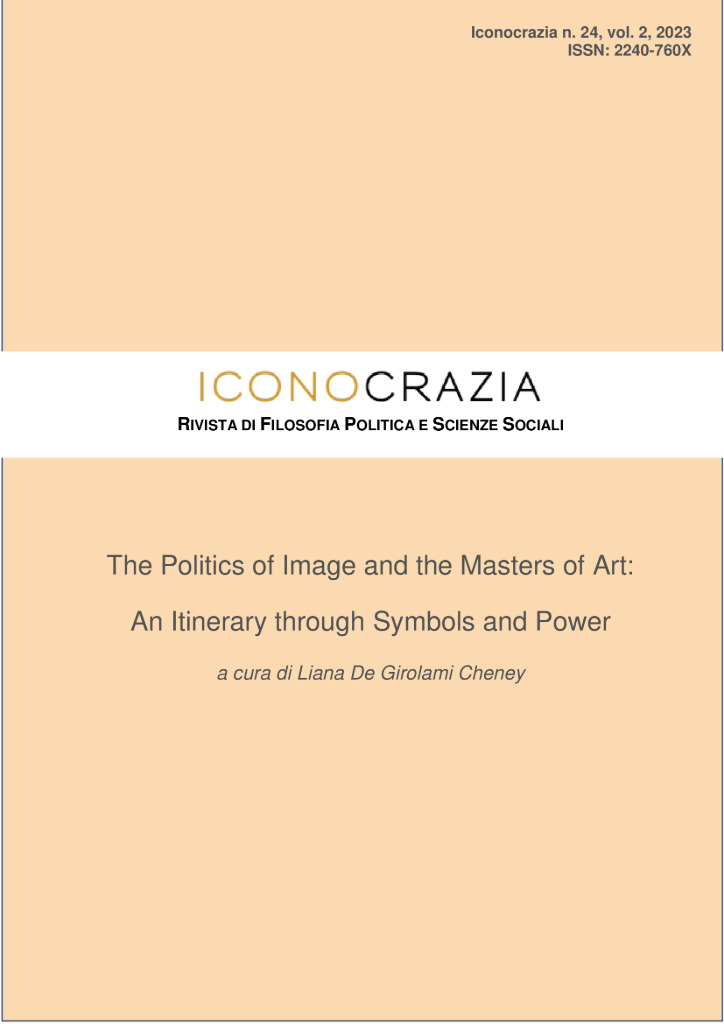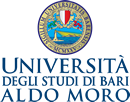Titian’s Late St. Sebastian: Pestilence, Piety, Ineffable Emotion
DOI:
https://doi.org/10.15162/2240-760X/1865Parole chiave:
Titian, Saint Sebastian, non-finito concept, plague, Apollonian beauty, Christian iconographyAbstract
Titian’s St. Sebastian (c.1570–1575) warrants sustained examination in view of the facts that the artist elected to formulate a distinctive mode of presentation vis-à-vis his previous versions of the subject and sufficiently finished principal portions of the image to establish essential concepts. David Rosand has elucidated the image’s paragone with antique sculpture; I expand investigation about heroic characterisation, an allusion to Apollonian beauty, and variations on sculptural prototypes by comparing iconographic examples and textual accounts of the saint. In particular, the saint’s striding stance intimates a narrative prolepsis that mitigates static representation as a bound martyr and amplifies resonant thematic conceits; close reading, in turn, facilitates scrutinising period conceptions within contexts of Sebastian as plague saint, Venetian political circumstances, and Christ-like sacrifice. Non-finito handling implies the artist’s immersion in representing this St. Sebastian, who presents an evolving image of the righteous character that, heedless of physicality, actively pursues things of greater glory. St. Sebastian incorporated implications of the divine origin attributed to the plague but evolved into a magnanimous exemplar of faith in redemption through Titian’s practice of inhabiting all emotions depicted.Riferimenti bibliografici
Artemieva, I. (2008). “Saint Sebastian.” In S. Ferino-Pagden (ed.), Late Titian and the Sensuality of Painting. Venice: Marsilio Editori. Cat. no. 3.19, pp. 304–307.
Barker, S. (2007). “The Making of a Plague Saint: Saint Sebastian’s Imagery and Cult before the Counter-Reformation.” In F. Mormando and T. Worcester (eds.), Piety and Plague from Byzantium to the Baroque. Kirksville, MO: Truman State University Press, pp. 90–131.
Barolsky, P. (1998). “As in Ovid, so in Renaissance Art.” Renaissance Quarterly, 51, pp. 451–474.
Boeckl, C. M. (2000). Images of Plague and Pestilence: Iconography and Iconology. Kirksville, MO: Truman State University Press.
Bohde, D. (2004). “Ein Heiliger der Sodomiten? Das erotische Bild des Hl. Sebastian im Cinquecento.” Männlichkeit im Blick. Visuelle inszenierungen in der Kunst seit der Frühen Neuzeit, 30, pp. 79–98.
Bridgeman, J., and K. Watts. (2000). “Armour, Weapons, and Dress in Four Paintings by Dosso Dossi.” Apollo, 151, no. 456 (February), pp. 20–27.
Brown, B. L. (2013). “As Time Goes By: Temporal Plurality and the Antique in Andrea Mantegna’s Saint Sebastian and Giovanni Bellini’s Blood of the Redeemer.” Artibus et Historiae, 34, no. 76 (2013), Papers Dedicated to Peter Humfrey: Part I, pp. 21–48.
Caldwell, J. G. (1973). “Mantegna’s St. Sebastians: Stabilitas in a Pagan World.” Journal of the Warburg and Courtauld Institutes, 36, pp. 373–377.
Campbell, S. J. (2017). “On Renaissance Nonmodernity.” I Tatti Studies in the Italian Renaissance, 20, no. 2, pp. 261–294.
Carabell, P. (1995). “Finito and Non-Finito in Titian's Last Paintings.” RES: Anthropology and Aesthetics, 28, pp. 78-93.
Chambers, D., and B. Pullan (eds.). (2001). Venice: A Documentary History, 1450–1630. Toronto: University of Toronto Press and Renaissance Society of America.
Chiu, R. (2012). “Music, Pestilence, and Two Settings of O Beate Sebastiane.” Early Music History, 31, no. 6, pp. 153–188. doi:10.1017/S0261127912000022.
Cocke, R. (1966). “Exemplary Lives: Veronese’s Representations of Martyrdom and the Council of Trent.” Renaissance Studies, 10, no. 3 (September), pp. 388–404.
Cranston, J. (2010). The Muddied Mirror: Materiality and Figuration in Titian’s Later Paintings. University Park: Penn State University Press.
D’Elia, U. R. (2005). The Poetics of Titian’s Religious Paintings.
Cambridge, UK: Cambridge University Press.
de Voragine, J. (1931) [1275]. The Golden Legend or Lives of the Saints. Jacobus de Voragine, Archbishop of Genoa, Compiler, 1275. First Edition Published 1470, Englished by William Caxton; First Edition 1483, VOLUME TWO, From the Temple Classics. F. S. Ellis, Ed. First issue of this Edition, 1900; Reprinted 1922, 1931. https://sourcebooks.fordham.edu/basis/goldenlegend/GoldenLegend-Volume2.asp (accessed 22 April 2020).
Eisler, C. (1961). “The Athlete of Virtue: The Iconography of Asceticism.” In M. Meiss (ed.), De Artibus Opuscula XL: Essays in Honor of Erwin Panofsky. Vol. 1. New York: New York University Press, pp. 82–97.
Freedman, L. (1988). “St. Sebastian in Veneto Painting: The ‘Signals’ Addressed to ‘Learned’ Audiences.” Venezia Cinquecento, 8, no. 15, pp. 5–20.
Gentili, A. (1992). “Tiziano e il Non Finito.” Venezia Cinquecento, 4, pp. 93–127.
Gibbons, F. (1968). Dosso & Battista Dossi: Court Painters at Ferrara. Princeton: Princeton University Press.
Hills, P. (1994/1996). “Tintoretto’s Fire.” In P. Rossi and L. Puppi (eds.), Jacopo Tintoretto nel quarto Centenario della morte: Atti de Convegno internazionale di studi. Venice/Padua Poligrafo, pp. 267–271.
Id. (2005). “Cuerpo y espíritu en el arte de Tiziano.” In J. Álvarez Lopera (coord.), Tiziano y el legado veneciano. Barcelona: Galaxia Gutenberg: Circulo de Lectores, pp. 173–190.
Id. (2007). “Titian’s Fire: Pyrotechnics and Representations in Sixteenth-Century Venice.” Oxford Art Journal, 30, no. 2, pp. 185–204.
Humfrey, P., M. Lucco, A. Rothe, D. W. Carr, J. Bentini, and A. Coliva. (1998). Dosso Dossi: Court Painter in Renaissance Ferrara. New York: Metropolitan Museum of Art.
Humfrey, P. (2007). Titian: The Complete Paintings. Ghent: Ludion.
Koos, M. (2011). “The Martyrdom of Love: Ambiguity in Dosso Dossi’s Saint Sebastian.” Marburger Jahrbuch für Kunstwissenschaft, 38, pp. 43–73.
The Latin Vulgate. https://vulgate.org.
Lightbown, R. (1986). Mantegna: With a Complete Catalogue of the Paintings, Drawings and Prints. Berkeley: University of California Press.
Löffler, K. (1912). “St. Sebastian.” The Catholic Encyclopedia. Vol. 13. New York: Robert Appleton Company, 1912. http://www.newadvent.org/cathen/13668a.htm (accessed 27 July 2020).
Logan, O. (1966). The Venetian Upper Clergy in the 16th and Early 17th Centuries: A Study in Religious Culture. Lewiston, ME: Edwin Mellen Press.
Marshall, L. (1994). “Manipulating the Sacred: Image and Plague in Renaissance Italy.” Renaissance Quarterly, 47, no. 3 (Autumn), pp. 485–532.
Martin, J. (1996). “Spiritual Journeys and the Fashioning of Religious Identity in Renaissance Venice.” Renaissance Studies, 10, no. 3 (September), pp. 358–370.
Mason Rinaldi, S. (1979). “Le immagini della peste nella cultura figurativa veneziano.” In Comune di Venezia, Venezia e la Peste 1348–1797. Venice: Marsilio Editore, pp. 209–224.
Meller, P. (1977). “Tiziano e la scultura.” In Sergio Bettini (ed.), Tiziano nel quarto centenario della sua morte 1576–1976. Venice: Ateneo Veneto, pp. 123–156.
Nagel, A., and C. S. Wood. (2010). Anachronic Renaissance. New York: Zone Books.
Norwich, J. J. (1982/1989). A History of Venice. New York: Random House.
Pedrocco, F. (2000). Titian. New York: Rizzoli.
Puttfarken, T. (2005). Titian and Tragic Painting: Aristotle’s “Poetics” and the Rise of the Modern Artist. New Haven: Yale University Press.
Ridolfi, C., and D. Hadeln. (1914/1924). Le Maraviglie Dell’arte: Ovvero Le Vite Degli Illustri Pittori Veneti E Dello Stato. 2 vols. Berlin: G. Grote. https://catalog.hathitrust.org/Record/010363793/Home (accessed 3 January 2023).
Ripa, C. (1603). Iconologia, ouero, Descrittione di diuerse imagini cauate dall’antichità, & di propria inuentione. Rome: Appresso Lepido Facij. https://archive.org/details/iconologiaouerod00ripa/page/300/mode/2up (accessed 3 January 2023).
Rosand, D. (1994). “Titian’s Saint Sebastians.” Artibus et Historiae, 15, no. 30, pp. 23–39.
Roskill, M. W. (2000). Dolce’s “Aretino” and Venetian Art Theory of the Cinquecento. Toronto: University of Toronto Press.
Tempestini, A. (1999). Giovanni Bellini. New York: Abbeville, 1999.
Titian: Prince of Painters. (1990). Munich: Prestel-Verlag.
Treccani Vocabolario. S.V. “generóso.” Istituto della Enciclopedia Italiana fondata da Giovanni Treccani S.p.A. ©Tutti i diritti riservati Partita Iva 00892411000. https://www.treccani.it/vocabolario/generoso/ (accessed 3 January 2023).
Waldron, M. A. (1912). “Virtue.” The Catholic Encyclopedia. Vol. 15. New York: Robert Appleton Company, http://www.newadvent.org/cathen/15472a.htm (accessed 23 April 2021).
Wethey, H. S. (1969). The Paintings of Titian, Vol. I: The Religious Paintings. London: Phaidon.







